OUR BURNING PLANET
Indigenous crops: Local is not only lekker, it’s also a weapon in the climate crisis battle
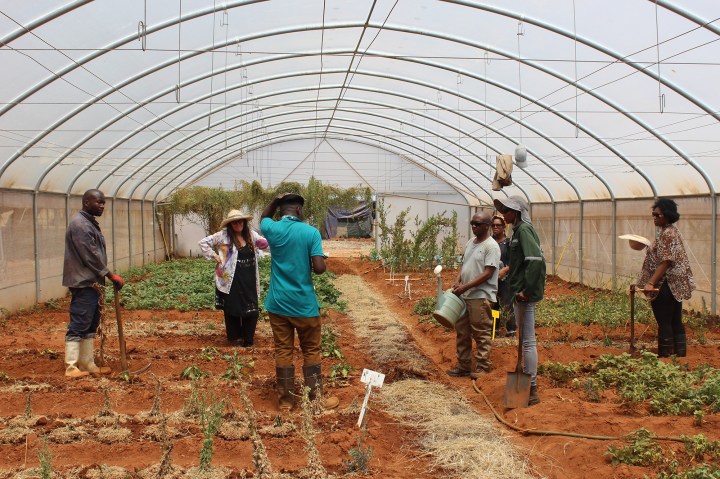
Indigenous crops are an absent feature on South Africans’ plates. But as the climate crisis intensifies, indigenous foods are proving to be an environmentally friendly alternative that could play an important role in mitigating the effects of climate change.
Small-scale farmer Siphamandla Mabaso has a vision to reintroduce indigenous crops to the plates of the people around him.
And part of that is his “slow food” approach, which not only mitigates against climate change effects in its farming technique and choice of indigenous grains but also integrates the local community and creates a local sustainable food system within his township.
“We established a community garden and then we started having cookouts where we celebrate this indigenous food… that was the beginning of my food journey,” Mabaso told Daily Maverick.
Mabaso says his journey is a continuation of his father’s efforts. He already had a small garden, but he noted that indigenous crops his family used to enjoy were missing from the garden.
Indigenous crops’ natural adaptation to continental climates make them a suitable alternative to conventional crops. Their drought-tolerant traits and ability to grow with little rainfall as compared to rice, maize and wheat make indigenous crops an African solution to an African climate problem.
According to the Department of Forestry, Fisheries and Environment (DFFE), indigenous foods refers to crops that grow naturally in South Africa, including crops that were introduced to the country decades ago and have since been naturalised. The crops can be categorised into three groups: food, vegetables and grains – the latter sub categorised into cereals, millet and sorghum, and pulses.
Among the list of indigenous crops are amadumbe, pearl and finger millet, sorghum, bambara nuts, cowpeas, mung beans, amaranth, num-num and marula. Those crops can be eaten and some of their leaves used for weaving and creating baskets, while others can be used as animal feed. Though some of these names may sound familiar, what they look like may be unfamiliar due to the decline of their consumption over the decades.
Mabaso farms amadumbe, sweet potato, African leafy greens, amaranth and black jacks, among other crops on his half-hectare farm in the KwaZulu-Natal township of Mpophomeni. He also has a seed bank where he stores indigenous legumes and other beans, including lima beans, white kidney beans and scarlet runners.
Mabaso has started a company called Emphare Organics, which is focused on food security and organic food farming in his township. This is his way of building a sustainable local food system for his community while empowering its people and continuing indigenous farming practices.
“I’ve developed ice teas through indigenous knowledge that has been passed down to me, like teas that are medicinal that were used by our ancestors and are now out of our diet. I’m trying to bring back the practice through consumption and developing products out of [that knowledge],” the 28-year-old entrepreneur said.
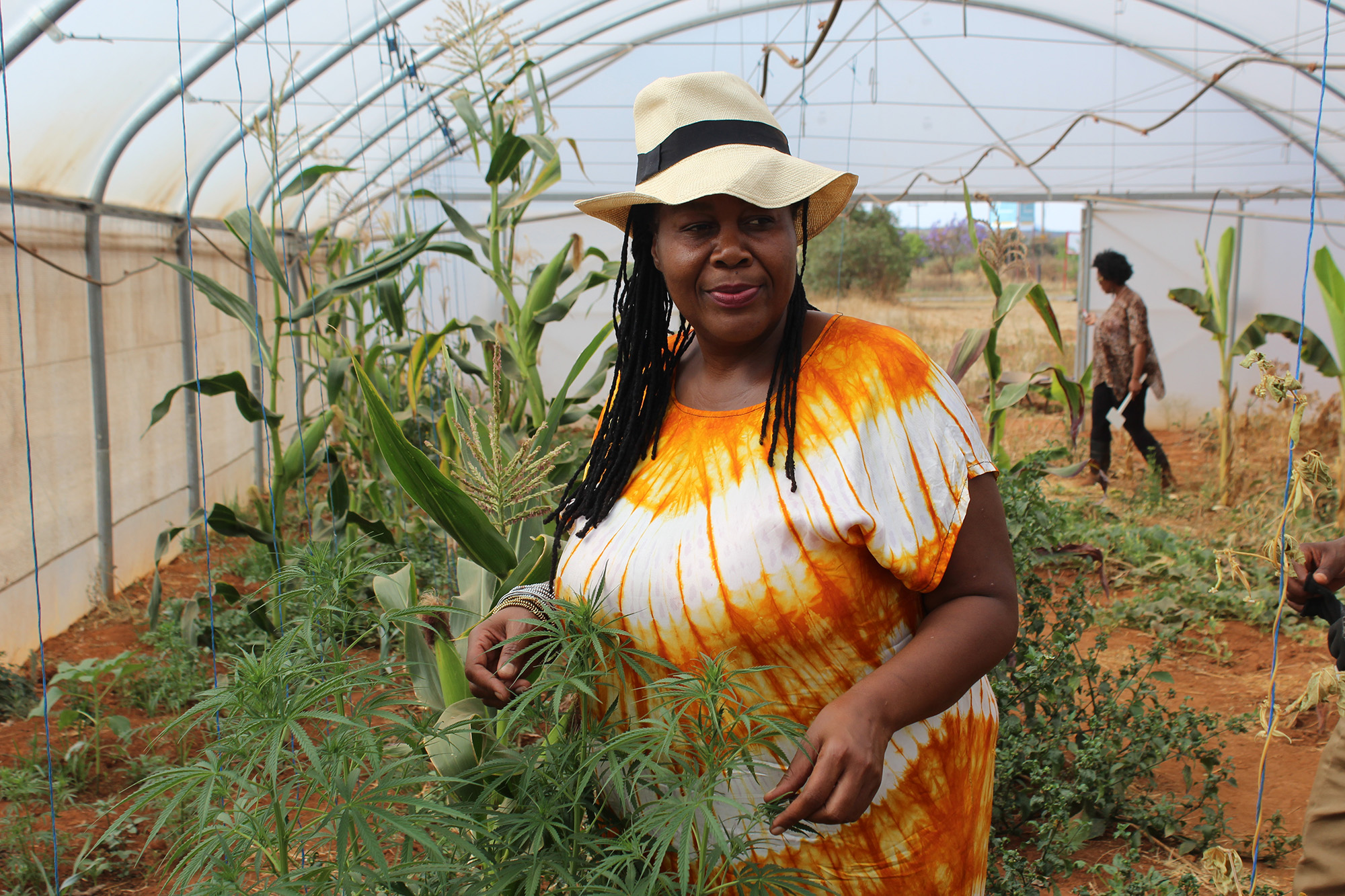
Small-scale farmer Siphiwe Sithole grows indigenous crops and also stores indigenous seeds for future use. (Photo: African Marmalade)
Phased out
South Africa’s integration into international food systems has meant that global foods are a great part of our diet, but this comes at the expense of indigenous crops and the knowledge that Mabaso practices.
“The introduction of Western food was done at the expense of African or indigenous crops. You are looking at the introduction of the gem squash – the gem squash was introduced at the expense of the calabash. And that was done systematically… it was easier for [colonisers] to introduce what they knew,” indigenous crop farmer Simphiwe Sithole told Daily Maverick. “It’s basically part of colonisation.”
He added that the failure of indigenous farming to develop beyond bartering and subsistence farming also played a role in marginalising indigenous crops.
Evidence of marginalising indigenous foods can still be seen through the naming of some indigenous crops. An example is the African potato, which was known as the k****r potato, and sorghum, previously called k****r corn.
Conventionally grown crops (usually genetically modified and maximum yielding) such as wheat, maize and rice dominate the agricultural landscape with 2.5 billion tonnes harvested annually, accounting for 42.5% of the world’s caloric supply. These crops were further pushed into the mainstream with the rise of the Green Revolution of the 1960s, which saw farmers taking up conventional farming methods to feed people on a global scale.
Production of this magnitude has meant that large-scale farmers could mass produce at a cheaper rate and undercut smaller players, driving out locally grown indigenous foods.
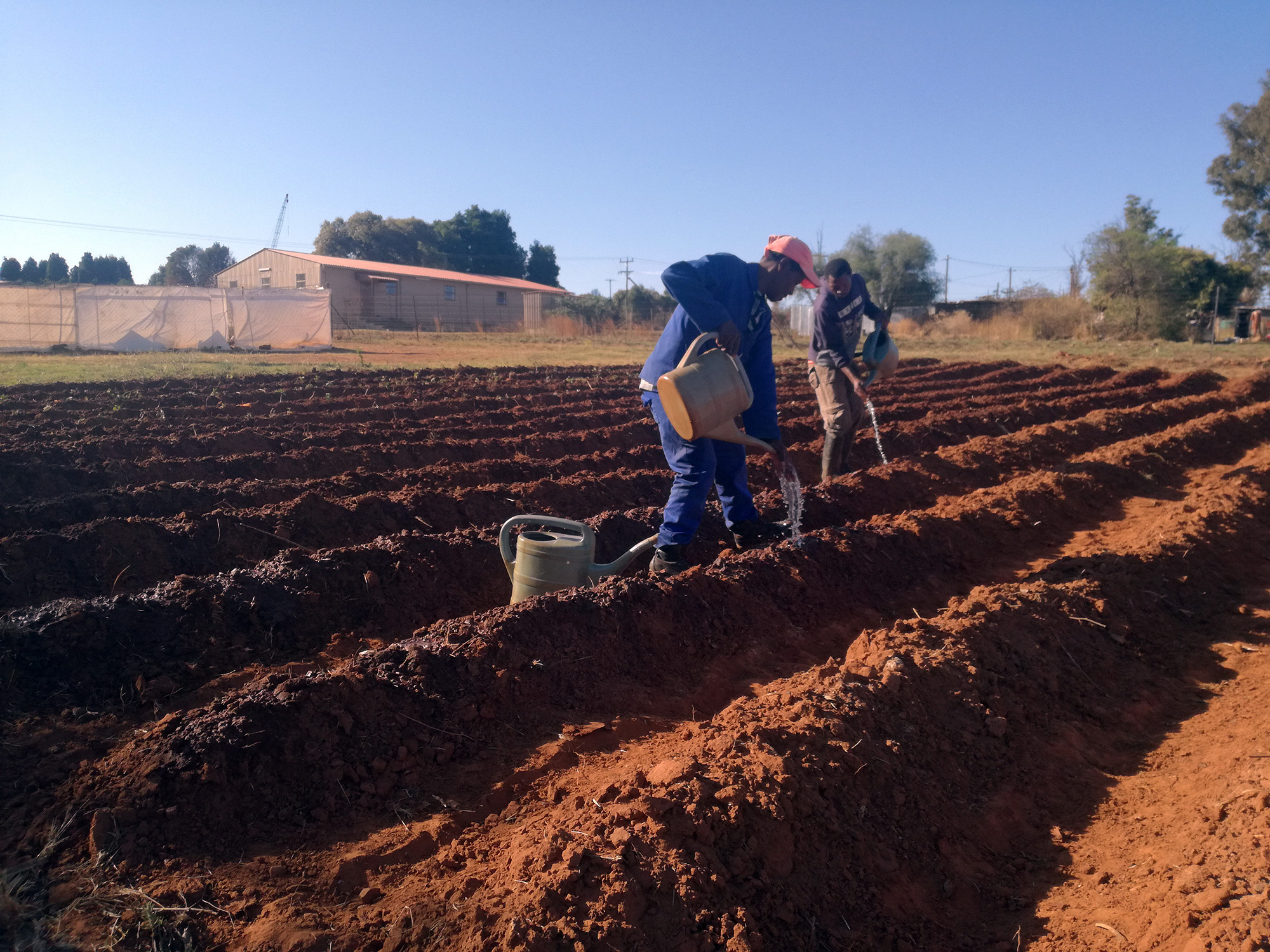
Traditional farming methods such as intercropping, among others, consists of farming complementary crops together. (Photo: African Marmalade)
Sustainable farming
Climate change consequences have included higher temperatures and less rainfall. Although organic farming has been found to be less environmentally friendly as resources are used to produce minimum yields, farming indigenous crops can be a solution to food security amid lowering rainfall, which threatens conventionally grown crops.
Intercropping is a traditional farming method that remains relevant as it addresses organic farming concerns. It is a method used by Mabaso to generate maximum yields in a sustainable manner. It is a complementary farming method and increases organic material in the soil, while maintaining soil moisture and reducing soil temperature.
“The practices that are used are focused on nutrition and sustaining the water within the soil. You’ll be implementing techniques such as trench farming,” Mabaso said.
He also uses mulching, a technique where the soil between plants is covered, limiting evaporation and therefore using less water – promoting organic processing of the soil and therefore more nutrition. Mabaso uses cow manure as fertiliser.
The intercropping method often sees farmers create a biodiverse planting area. Often, grains will be planted with fruits or vegetables whose traits complement and nourish each other.
Indigenous knowledge
A University of Cape Town study found that if greenhouse emissions in the region continue to increase, some indigenous crops such as sorghum could be under threat. However, indigenous farming methods could be a mitigating factor to this.
“Our results point to the vast pool of traditional knowledge of food systems that we could potentially use in regional adaptation responses,” said Dr Christopher Trisos of the Climate Risk Laboratory.
“The use of traditional knowledge [for adaptation] is potentially a key strength of African communities,” Trisos added.
The United Nations’ 17 Sustainable Development Goals (SDGs) and traditional farming methods are greatly aligned.
The second of the 17 goals includes objectives such as doubling agricultural production and incomes of small-scale farmers, particularly those of women and indigenous people. These objectives are focused on ensuring sustainable food production systems and resilient agricultural practices that maintain ecosystems and strengthen climate change adaptation, while improving land and soil quality, ambitions that Mabaso is dedicated to as a small-scale organic farmer.
Indigenous knowledge systems practised by smallholder farmers fit the bill of meeting these SDGs. However, barriers such as government support and indigenous crops being enjoyed by a niche market often stand in the way of furthering these objectives.
Although indigenous foods are still a niche market in South Africa, they make up a great part of staple foods across the continent.
“More than 70% of the continent relies on [indigenous crops],” said Dr Ethel Phiri, a sustainable plant production lecturer at Stellenbosch University.
“There are crops we tend to focus our research [on] and try to chase their climate resilience so we don’t lose them… yet, if we lose that crop, it’s not the end of the world,” Phiri said, referring to the availability of indigenous crops as an alternative to commercial crops.
“The problem with stopping the diversification of crops is the monoculturing of having one crop in one huge area… it depletes the soil of its natural regenerative abilities,” Phiri added.
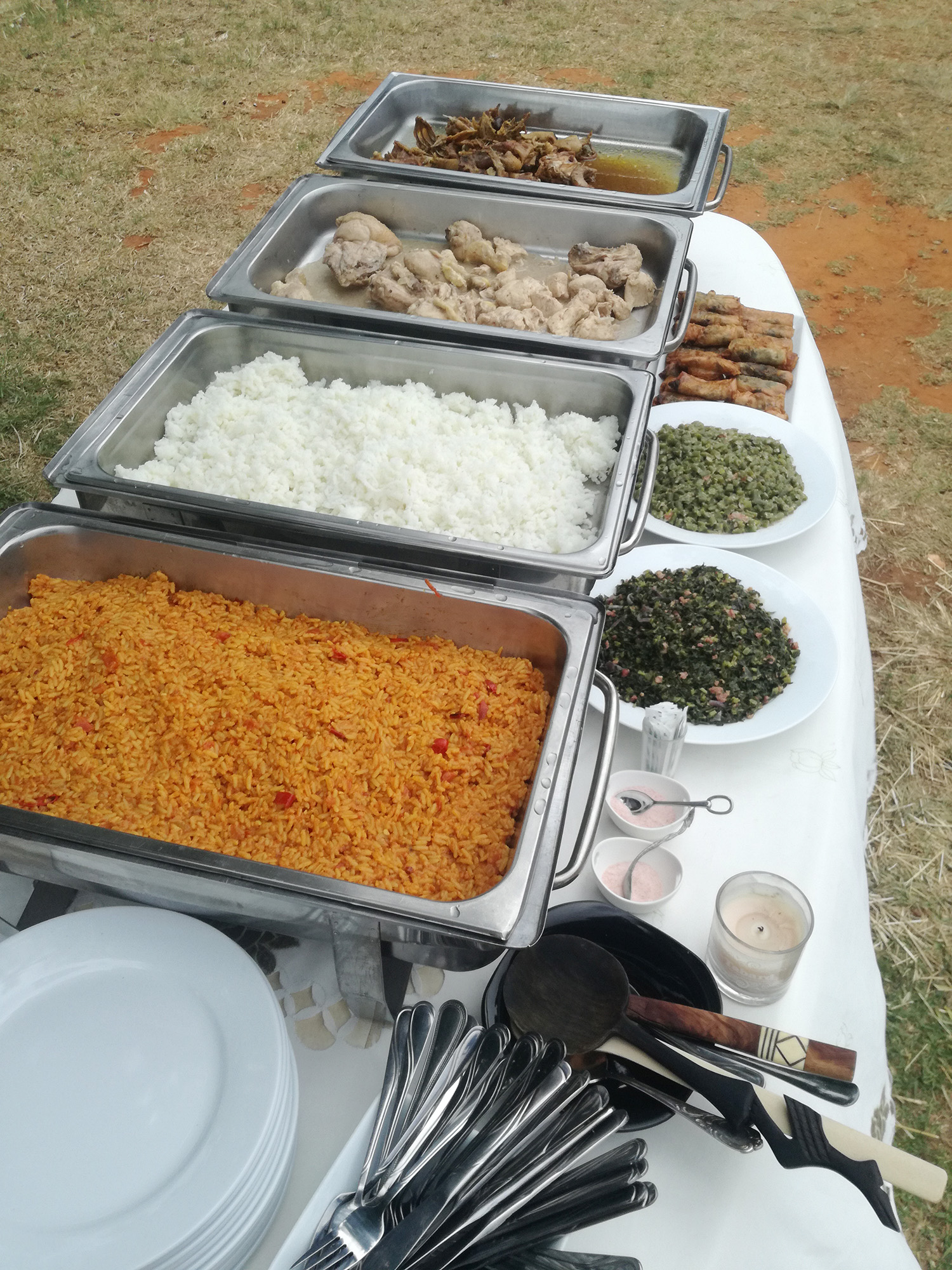
An African feast: Indigenous hard body chicken, known as ‘Umleqwa’, African leafy greens and Jollof rice, alongside other indigenous foods. (Photo: African Marmalade)
Environmental benefits
Some of the benefits to the environment associated with farming indigenous crops, according to the DFFE, include improved water conservation, better nutrient absorption and retention, overall ecosystem restoration, lower soil temperatures and a good ground cover, which assists with soil erosion.
“With the indigenous [crops], a lot of them are drought resistant; they also consume less water. Hence, in your traditional/indigenous crops, you do not irrigate. You do not work against what you have, you work with what you have,” Sithole said.
Sipamandla Manqele founded Local Village about five years ago after discovering that there was a need for indigenous foods in South Africa. The online store, which supplies to various retailers, has a product range that includes sorghum, teff, bambara and tiger nuts, moringa powder and African hibiscus.
“One of the benefits: we realised that most of these crops that are African indigenous are actually good for the climate. So that for us was a bonus,” said Manqele.
“We can use our crops as Africans to be able to contribute to the fight against climate change.”
A study by Agriculture and Food Security shows that grains like sorghum can grow in average temperatures of 26°C-30°C, requiring 40mm-100mm of rain. Pearl millet is also hardy, as it can grow in temperatures of up to 46°C and requires only 20mm-60mm of rain. On the other hand, grains such as wheat grow in temperatures averaging 15.5°C with 30mm-100mm of rain needed.
“Environmental benefits of farming indigenous crops is that they don’t require much input,” Mabaso said. “It’s important, since some crops are medicinal and [minimal interference] contributes to the wellbeing of the soil.”
The absence of overly processed and genetically modified indigenous grains has meant that many of the grains have retained their tolerance against intense climate temperatures. Indigenous grains also have early developing main roots that allow them to seek underground water sources such as aquifers.
“[A return to indigenous crops] is good for the environment, it is good for the soil. We can grow those crops effortlessly,” Sithole said.
A call to a return to indigenous foods
Chef Mokgadi Itsweng is one person practising and encouraging a return to indigenous foods by calling for a change in the way people eat and farm, advocating for food sustainability.
“A lot of the indigenous ingredients or crops are sustainable. They are good for the Earth, they are healthy for us,” Itsweng said.
Itsweng is part of a group called Chefs’ Manifesto, a collective of chefs educating people about the different ways of farming, and eating what’s mostly available. After cooking indigenous food in Ireland for a launch event on food and climate, Itsweng realised the necessity of bringing back indigenous foods to home soil.
“We were eating sorghum and cowpeas and millet… those are our crops. Those are the crops we grew up eating that my grandmother was eating. The more I kept learning, the more I realised that these crops are tied into our rituals; tied into who we are, but we’ve forgotten about them,” the chef said. “All these ingredients are in our lives, we have just shut that door.
“That’s what ‘The Plate with Chef Mokgadi’ was all about; it was about opening up people to different ways of eating and including [indigenous] grains. It teaches them about stuff that our parents, our great-grandparents were eating that we’re not eating. It’s just exposing people to that,” the chef said.
Itsweng says she has come to learn that the apartheid regime pushed out grains because maize was easier to process and it was cheaper as farmers then used pesticides to fast-track the growing time.
“The Plate with Chef Mokgadi” started in 2019 and has had four events, with its progress dampened by the Covid-19 pandemic. Itsweng has since held cooking classes that promote indigenous foods to maintain the momentum, while maintaining her own backyard garden of indigenous crops.
“We just need to change our outlook on our lives and our food, and give it more presence in our lives,” Itsweng said. DM/OBP


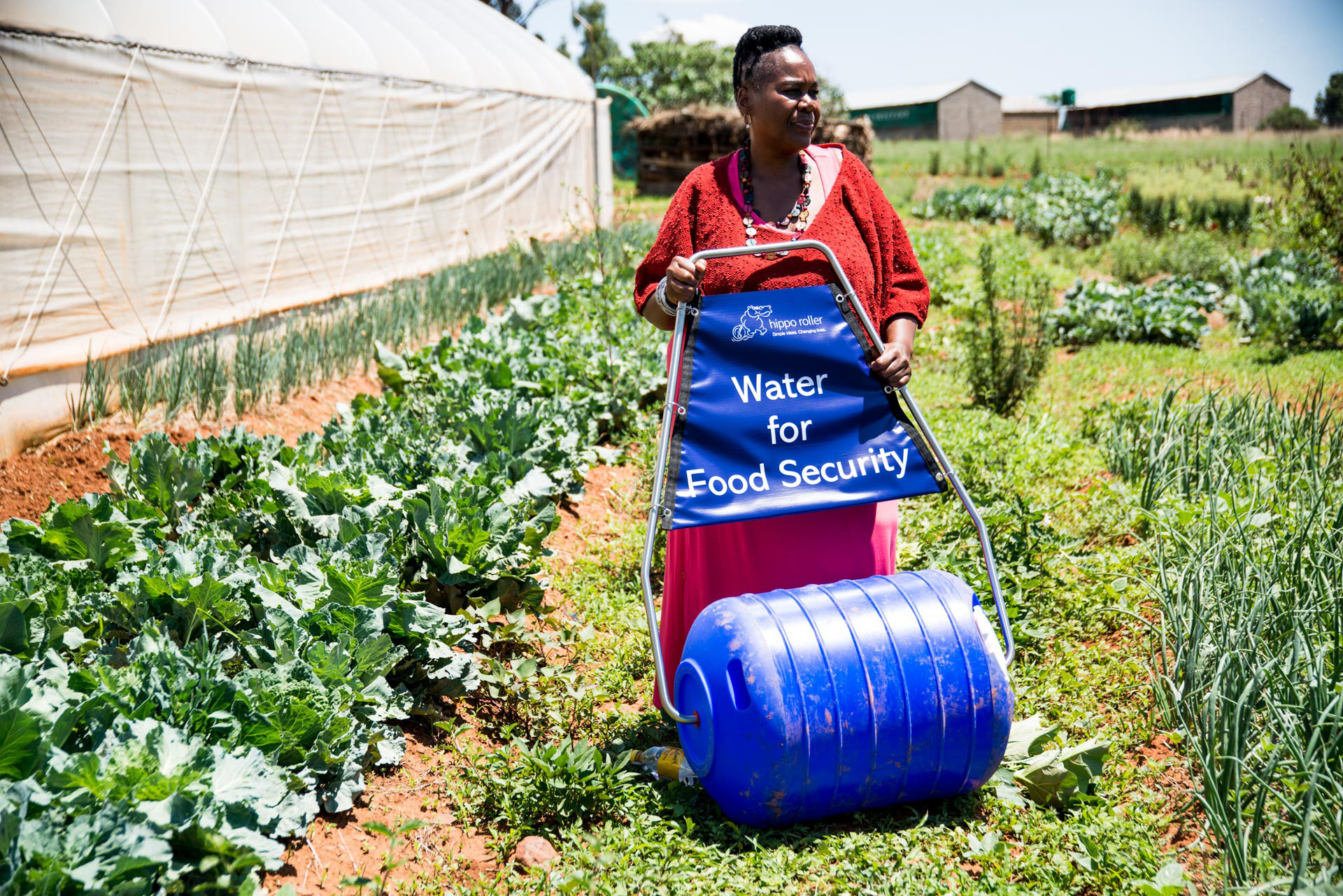



















 Become an Insider
Become an Insider
Thanks to Onke Ngcuka for a very interesting article reporting on the wonderful work of Siphamandla Mabaso, and for the well-reasoned support for indigenous crops and African Food Sovereignty! I fully agree that we need to move away from a colonial approach to farming. There is only one comment where as a soil scientist working on organic agronomy for 52 years, I must disagree. The article says “Although organic farming has been found to be less environmentally friendly as resources are used to produce minimum yields…” and gives a link to an article in the journal “Sustainability”. In fact, the article says “Research has shown that relative to conventional agriculture, organic farming is more efficient in its use of non-renewable energy”; it does say that yields are sometimes lower and GHG emissions sometimes higher but this does NOT translate to “minimum yields”! My research (see Raymond Auerbach Researchgate) shows that in the Mandela Trials after 3 years organic farming systems outyielded conventional, especially in dry seasons; once scientific research supports organic farming, it becomes productive, especially for indigenous crops. Sebake (2020) also showed that CO2 emissions were much lower in organic, and although methane was very slightly higher, the total C emissions were substantially lower for organic. For more information, download my book “Organic Food Systems” free by Googling “CABI Auerbach” and look at chapters 18-22. Professor Raymond Auerbach.